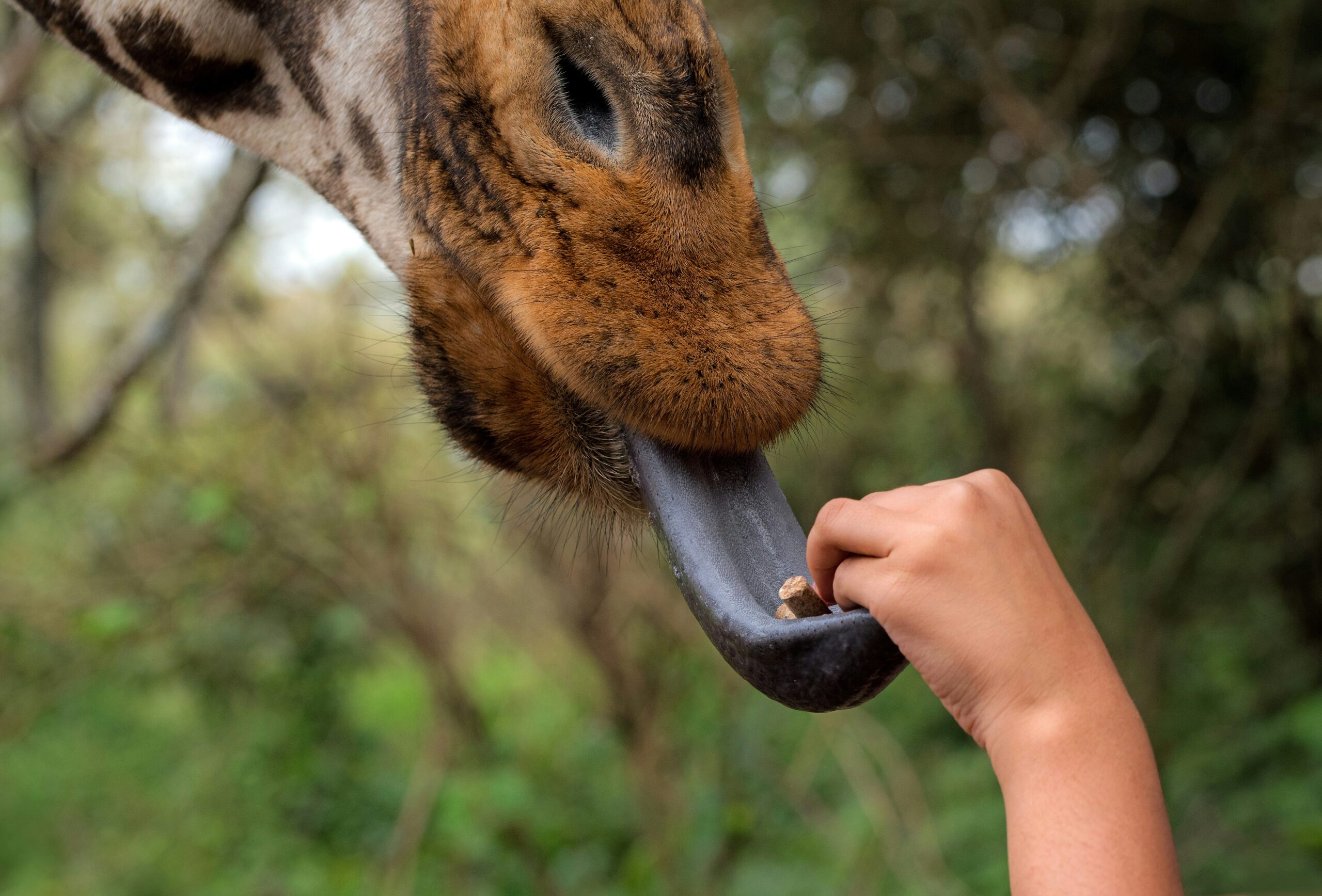
Why Do Giraffes Have a Blue Tongue?
Giraffes are already weird enough : a two-meter neck, insane balance skills, and a heart strong enough to fight gravity, but their blue tongue might be one of their strangest features. So, why this unusual color? Turns out, it’s a mix of practicality and survival.
Sun Protection for the Ultimate Leaf Picker
Giraffes spend hours each day stretching their necks into trees and using their 50 cm long tongue to strip leaves from branches. But spending that much time exposed to the sun creates a risk: sunburn. Their tongue, constantly sticking out, evolved to be dark-colored (bluish, purplish, or black) due to an abundance of melanin, the pigment that protects skin from UV damage. Think of it as built-in sunscreen.
Tough as Leather, Precise as Tweezers
A giraffe’s diet isn’t exactly friendly : acacia trees, their favorite snack, are covered in long, sharp thorns. Their tongue isn’t just flexible, it’s also thick and resistant, with extra keratin layers that prevent cuts and injuries. Imagine eating a salad full of needles daily, you’d want some protection too.
Better Grip, Less Risk
Beyond toughness, a darker tongue retains moisture better, which is crucial for an animal living in hot, dry climates. A dry tongue would make it harder to grip leaves efficiently, and in the wild, efficiency means survival.
So, the giraffe’s blue tongue isn’t just a random quirk, it’s a clever adaptation against sun, thorns, and dehydration, making them the ultimate treetop diners.
